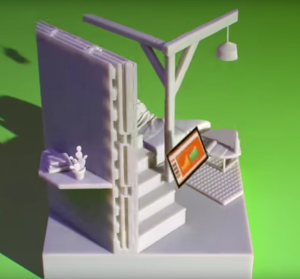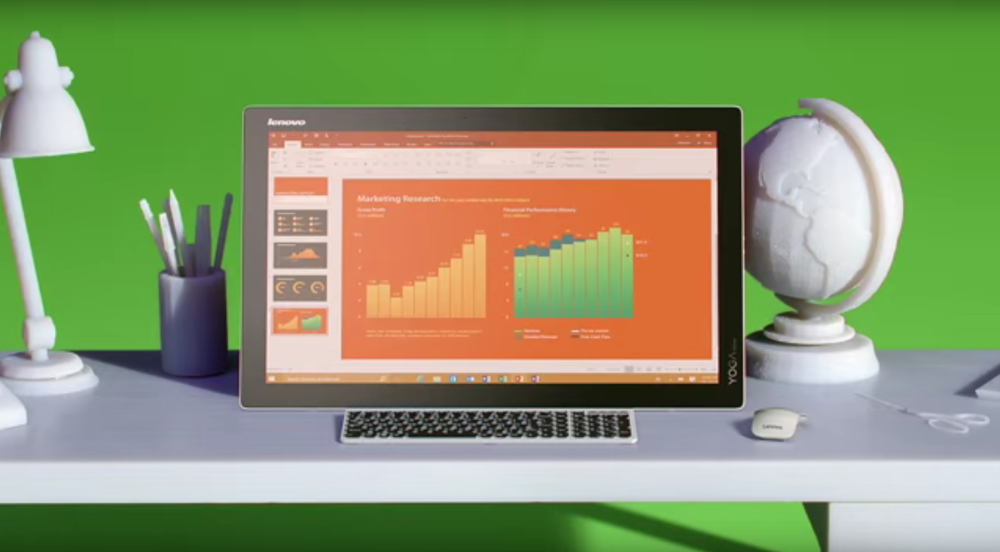 If ever there was a storytelling medium that was more ideally suited for 3D printing technology than stop motion animation then I have yet to learn about it. Traditionally, dozens of different faces, hands and entire bodies would need to be individually sculpted by artists in order to be able to manipulate the characters enough to show a full range of emotions and movements. Between the character figures, the tiny props and the sets, a stop motion film can literally take years to complete. A 3D printer can cut all of that time and work in half, allow filmmakers and animators far more flexibility and freedom during filming and provide a greater consistency from model to model. It’s a match 3D printed in heaven.
If ever there was a storytelling medium that was more ideally suited for 3D printing technology than stop motion animation then I have yet to learn about it. Traditionally, dozens of different faces, hands and entire bodies would need to be individually sculpted by artists in order to be able to manipulate the characters enough to show a full range of emotions and movements. Between the character figures, the tiny props and the sets, a stop motion film can literally take years to complete. A 3D printer can cut all of that time and work in half, allow filmmakers and animators far more flexibility and freedom during filming and provide a greater consistency from model to model. It’s a match 3D printed in heaven.
That isn’t to say that stop motion is suddenly easy — a bulk of the work is still invested in actually filming the models. Just a minute of completed footage can take weeks of filming, and that’s for the easy scenes. Animating complicated movements can take even longer. And while 3D printing can help animators out by saving them pre-production time and money, that doesn’t mean that the people doing the 3D printing aren’t going to have a lot of work ahead of them. When British advertising and film production company Blinkink came up the idea for using 3D printed sets for a stop motion animated TV commercial, they brought the concept to 3D printing service bureau IPF to see if it could be done.
The ad was for the new Lenovo YOGA Home 900 portable, touchscreen PC being advertized as part of their “Goodweird” campaign. In order to highlight the high-tech computer’s ability to move from room to room without wires, Blinkink wanted to have miniaturized sets flowing between an office to a home and then outside to a garden. IPF would need to 3D print thousands of 3D printed parts, including multiple versions of the sets, to demonstrate the movement from landscape to landscape and hundreds of tiny props like furnishings, desk lamps, a potted cactus, a bottle of wine and even a tiny pair of scissors. With only four weeks to complete the entire job, IPF said that while they could 3D print the sets, it would take a lot of work to do it, and they would not have a lot of time to do it in.
“Although the concept was simple enough, the execution and logistics of the project took some great planning from their team. IPF were on hand to advise on the feasibility of printing the list of items for the shoot- and the list was extensive to say the least. Even though the pre-processing of all the 3D files was reasonably laborious it was nothing compared to the production stage. Once up and running the machines could not stop printing if we were to hit the deadline. This meant that even if the build finished at an ungodly hour, someone had to be here to remove the parts and set off the next lot. The four Stratasys Polyjet machines ended up running 24 hours a day, 7 days a week for four weeks and they performed beautifully,” IPF wrote on their blog.
Because IPF is a longtime Stratasys service bureau, they had a full stable of Stratasys 3D printers at their disposal, and their four Objet PolyJet printers ended up getting quite the workout. Using their Objet Connex and Objet Eden printers, all of the sets, props and furnishings were 3D printing using Rigid Opaque (VeroGray) PolyJet 3D printing material. The material and color was chosen because it would look the best on camera and it would be the easiest material to light.
You can see the 3D printed, stop motion Lenovo ad here:
If you think 3D printing all of those sets was a tough enough job on its own, all of those parts would also need to be cleaned and post processed. That means that every single 3D printed flower pot, patio chair and desk globe needed to have all of their supports removed by hand. The IPF team used clippers and dental picks to clear away the supports and then jet washed the parts to smooth and finish them. There is simply no way that this volume of parts could have been made using traditional methods even in a four-month period, much less the four weeks that IPF and their Objet 3D printers did it in. Discuss in the 3D Printed Sets forum over at 3DPB.com.
[Images: IPF]Subscribe to Our Email Newsletter
Stay up-to-date on all the latest news from the 3D printing industry and receive information and offers from third party vendors.
Print Services
Upload your 3D Models and get them printed quickly and efficiently.
You May Also Like
Reinventing Reindustrialization: Why NAVWAR Project Manager Spencer Koroly Invented a Made-in-America 3D Printer
It has become virtually impossible to regularly follow additive manufacturing (AM) industry news and not stumble across the term “defense industrial base” (DIB), a concept encompassing all the many diverse...
Inside The Barnes Global Advisors’ Vision for a Stronger AM Ecosystem
As additive manufacturing (AM) continues to revolutionize the industrial landscape, Pittsburgh-based consultancy The Barnes Global Advisors (TBGA) is helping shape what that future looks like. As the largest independent AM...
Ruggedized: How USMC Innovation Officer Matt Pine Navigates 3D Printing in the Military
Disclaimer: Matt Pine’s views are not the views of the Department of Defense nor the U.S. Marine Corps Throughout this decade thus far, the military’s adoption of additive manufacturing (AM)...
U.S. Congress Calls Out 3D Printing in Proposal for Commercial Reserve Manufacturing Network
Last week, the U.S. House of Representatives’ Appropriations Committee moved the FY 2026 defense bill forward to the House floor. Included in the legislation is a $131 million proposal for...






































